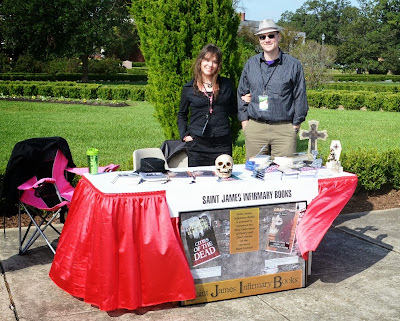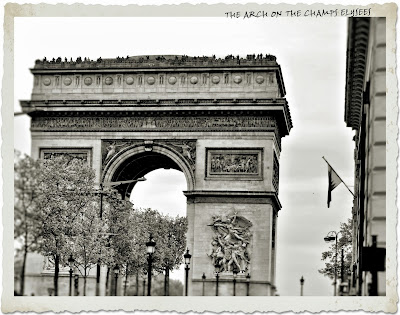 |
| Boris Karloff, Frankenstein (1931) |
Back in the day, actors like Bela Lugosi and Boris Karloff became huge celebrities as they helped to create a class of films that became known as Horror. They were (and still are today!) household names. But as horror movies evolved, and involved more, uh, odd behavior, morphing from Gothic classical material to shamelessly campy and graphic horror, the top roles in horror movies seemed to go to unknown actors who remained as such. Vincent Price might be an exception to this rule. And even Bela, Boris and Vincent were never really accepted as mainstream actors. Horror was their shtick and to horror they shtuck.
Today, it is mostly the same. Horror films are made with few known actors in their casts. You might see an actor or actress whose career has tanked take a role in a horror movie because they can't get any other work. But you rarely see an A-lister seek after a horror role.
But something funny happened in the 1960's that led to a rash of top Hollywood stars who dove head first into the horror genre. Maybe it was the success of such films as Hush...Hush, Sweet Charlotte (1964) that allowed horror films to drag themselves into respectability behind the casting of such mega-stars as Bette Davis and Olivia de Havilland. Also, as the 70's dawned, there was a great revival of spiritual interest in the United States. Unlike the spiritualism kick of the 1920's, this new interest did not just see the spiritual plane as something benign, where old relatives sat around wishing to speak with their great-nieces and great-nephews. Just as the churches were experiencing a rise in popularity of the charismatic movement, secular society was becoming more intrigued by the spiritual battles between God and Satan. This turn of attention was noted in Hollywood, and some very big stars were suddenly willing to lend their name and image to some rather strong horror...uh, shall we say offerings?
 |
| Oliver Reed, Burnt Offerings (1976) |
And since we've used the word, I'll start with Burnt Offerings, a film from 1976. This is a very good haunted house film, and it starred Oliver Reed, who was just beginning to reach his stride in what would become a very big career. He was no stranger to horror, having played a local thug in The Shuttered Room, the 1967 adaptation of Lovecraft's short story The Dunwich Horror. And though Reed was not yet the iconic celebrity he would become, Burnt Offerings also attracted such stars as Burgess Meredith and Bette Davis.
What I liked about this movie was the slow tension as Reed's character slowly, and ever so slightly, begins to change as a husband and father. It never fully degrades like the father character in The Shining, but this more subtle change is unnerving coming from a man of Reed's brute frame. He always had that smoldering undertone that made us believe that acting or not, you wouldn't want to turn your back on this guy for long. And in this film, he uses it to great effect.
 |
Gregory Peck, The Omen (1976)
Not the usual image we have of Atticus Finch. |
Next on my informal list is The Omen (1976), which of course starred that stony-faced megastar Gregory Peck. His appearance in this movie definitely gave credibility to the idea that any actor could consider appearing in a horror movie. After all, he was arguably as big a star as Bette Davis. And while she had an image as a bit of a feisty woman who never wanted to follow the rules, Peck had impeccable credentials as an all around good guy. And Lee Remick had already been cast opposite some very big names. She was already becoming a star. As for the movie itself, I can't endorse it. I tried to watch it, and it was so silly, I gave up early on it. It just seemed so corny.
As mentioned in an earlier post, the 1979 Dracula starred none other than Laurence Olivier, often considered Britain's greatest Shakespearean actor. In this film he plays Van Helsing, the Dutch doctor who is summoned to help puzzle out the malady that is afflicting the anemic Lucy. What I like about Olivier's performance is his near perfect accent that truly mimics the syntax of Stoker's Van Helsing character. He also manages to portray Van Helsing just as the character is written. He is at times cute, odd, mysterious, bold, and even frail. Olivier exhibits all of these mannerisms in a way that makes sense and is in no way forced. I will point out that this is no stretch for Olivier to take on this role, since the source material is part of the classic canon. However, he was also willing to join in on the bloody fun of Marathon Man in 1976, where he maniacally tortures Dustin Hoffman with a dentist's drill. Obviously he did not seem to worry that such movies might hurt his respectable image.
 |
| George C. Scott, The Changeling (1980) |
George C. Scott, a bigger-than-life star, took on the haunted house theme in the 1980 film The Changeling. (Yes, 1980 is still the 70's for all you nit-pickers out there.) And for me, this is one of the better modern haunted house stories. Also drawing in Golden Age of Hollywood film star Melvyn Douglas (the man who made Garbo laugh in 1939's Ninotchka), a personal favorite of mine, this movie is saturated with atmosphere and will make you wary of old, high-backed wheelchairs. At this point, Scott was definitely a major player in Hollywood, having been nominated for an Academy Award four times (and winning best actor for his signature role in Patton). This was not his only outing in the horror genre, later playing the mystic Native American Indian in Firestarter and even joining the cast of The Exorcist III.
Of course, some horror fans out there would suggest that the biggest film for this genre in the 70's was The Exorcist, which certainly drew its share of Hollywood talent. Max von Sydow was already an accomplished actor in 1973, as were Ellen Burstyn and the irascible Lee J. Cobb. However, I'll concede they do not fit the profile of my A-listers whose impressive notoriety aided Horror as it matured into a respected film category. But a little known fact about this movie should be highlighted here: the original actress offered the lead role by director William Friedkin was none other than Hollywood's most respected lady of the silver screen, Audrey Hepburn. And she was actually willing to accept the role. Unfortunately for Friedkin, she was something of a recluse by this time, and would only take the role if the filming could be done in Rome. The studio said no, and Anne Bancroft eventually accepted the role, only to be forced to back out due to a pregnancy. I often wonder just how Hepburn's casting might have changed this movie, and how it might have changed her already legendary career.
 |
Douglas Fairbanks Jr., John Houseman, Fred Astaire,
and Melvyn Douglas, Ghost Story (1981) |
This is not a complete listing of movies that fit this profile, but it gives you an idea of how the genre was changing. By the 1980's, we would see more of the same. Ghost Story, in 1981, starred no less than four classic actors: Fred Astaire, Melvyn Douglas, Douglas Fairbanks Jr., and John Houseman. (And I shouldn't leave out Patricia Neal, a great lady from the Silver Age of Hollywood best known for her roles in Breakfast at Tiffany's and The Day the Earth Stood Still.) Silence of the Lambs boasted stars Jodie Foster and Anthony Hopkins. Hopkins, of course, ended up winning the Best Actor Oscar for his horror role.
Will we see such casting again? I'm sure it will happen. Perhaps Sean Connery could be lured from retirement to star in a ghost or haunted house story. Maybe Tom Hanks could be tempted into something more diabolic than his light-weight Dan Brown religious thrillers. After all, Robert De Niro did play Frankenstein's monster in Kenneth Branagh's 1994 version of Frankenstein, though very few people saw it.
Sadly, much of the horror genre has been hijacked by the recent obsession with torture-porn, and this has drained a great deal of credibility from what these classic actors and actresses helped to create. Will there come a time when the A-listers decide to take back what their predecessors built up? Only time will tell.














